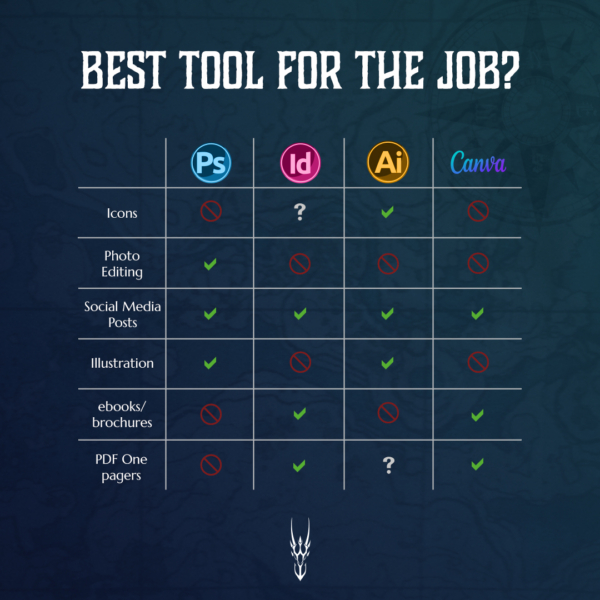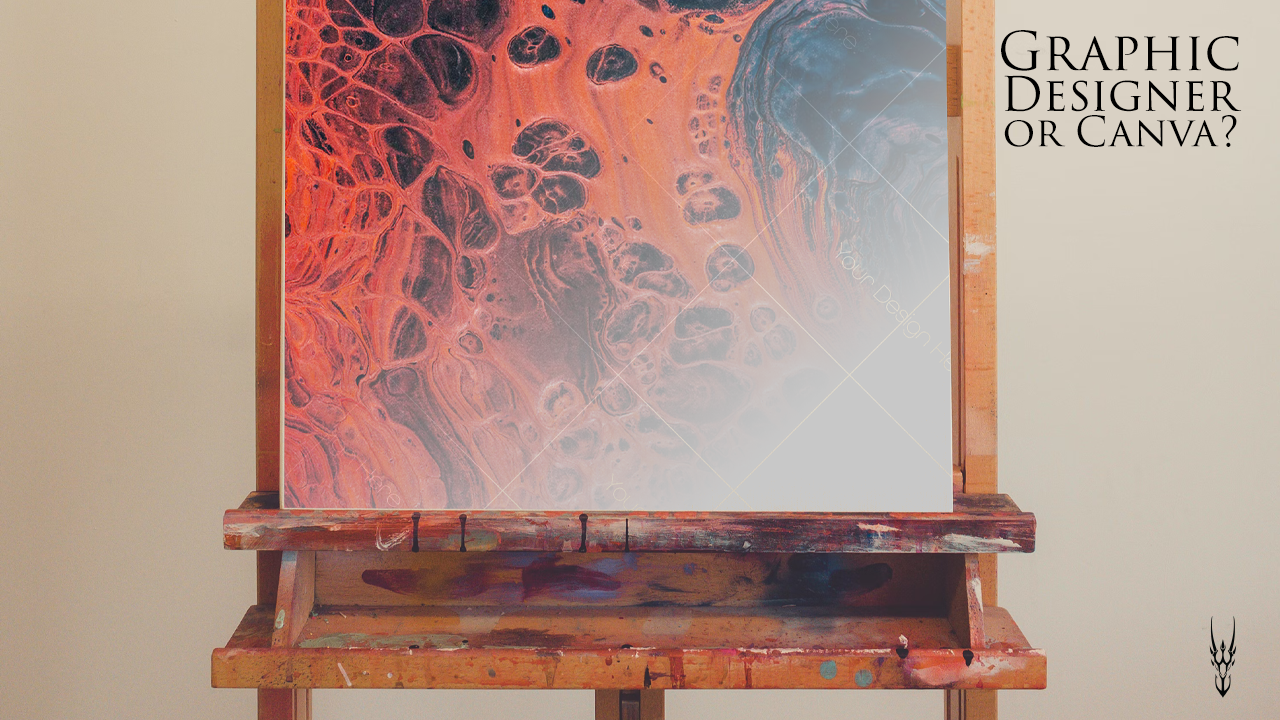‘Are you worried about Canva?’
I’ve been asked this question a few times. On the surface, it makes sense. I’m a graphic designer and make a living through design. Therefore, any form of automation or ‘DIY’ option should be a killer for my business.
It’s not hard to see why some designers feel uneasy about the likes of Canva – some even get sullen at the mere mention of it. It can be a powerful tool to help small business owners design their own assets. To the casual observer, each business owner who uses it is one fewer in the pool of potential clients.
I don’t believe that to be the case. Not quite, anyway.
So let’s break down the ‘Graphic Designer vs Canva’ debate. To start, we’ll define the terms.
What is Canva?
Canva advertises itself as ‘a free-to-use online graphic design tool’ that can be used ‘to create social media posts, presentations, posters, videos, logos and more.’ It was launched in 2013 and has both free and premium versions available. The main selling points to Canva are that it is online and easy to use.
Canva uses a drag and drop interface, allowing users to create a range of assets using a selection of stock items. As it has a variety of templates, it is easy for even a beginner to create good graphics. Although the free version has a very basic selection, the premium subscription has many more to choose from.
Evan a beginner can make passable graphics and this is Canva’s key strength. But this is not true design – what you’re doing is just arranging elements and this is only a small part of design.
What does a Graphic Designer do?
A graphic designer is someone who creates visual content to communicate a message (or at least the good ones are). Though creative, their main job is actually communication. A great graphic designer communicates ideas and creates an emotional connection between business and client. As such, they aren’t just pixel pushers, but are story tellers and communicators.
A graphic designer can create a range of original assets, from social content to presentations, and will use a variety of programs that are suitable for each purpose. If they need to create icons, they’ll use Adobe Illustrator. For photo manipulation they might use Photoshop. As such, they have a number of tools that are all fit for particular purposes at their disposal.
When you hire a graphic designer, you’re not just getting someone who knows when things look great. You’re getting a professional who can tell your brand’s story through visual communication.
The Difference?
Although both options can create a similar range of assets, there is a vast difference between them. This also means that each has some strengths and weaknesses.
Canva is quick, easy and (at least for the free option) cheap. It gives anyone a chance to create good looking graphics, regardless of design experience. This makes it easily accessible, and the fact it is online makes it useable almost anywhere.
A graphic designer is more expensive, but is also bespoke. As they bring their expertise and industry standard programs, they can create a wider variety of custom assets. Their expertise also allows them to create designs that communicate an idea with your audience.
So – Graphic Designer or Canva?
Now that you know the difference, it becomes easier to discover which option works for your business. There’s no hard and fast answer, but there are a number of factors that can influence your decision.
Price – For some business owners, it’s all about the bottom line. Canva, even the premium version, is likely cheaper than going to a graphic designer every time you need a new design.
Bespoke – Canva cannot offer the same level of customisation that a graphic designer can. A great graphic designer can understand the message you want to convey and create bespoke assets that attract your audience
Time – a business owner may just not have time to learn the software. The expense of a graphic designer can often be offset by the amount of time it saves the business, freeing them up to do the parts of the job that generate income.
Project type – Canva is a good tool for certain projects, but falls way behind on others. A graphic designer will likely have skills across multiple industry-standard design programs and can use the best one for the job.

Brand Recognition – As most Canva designs are templated from a limited set of assets, there is a decent chance that similar businesses will end up with similar results. This can lead to brands that use Canva looking indistinguishable from one another. Using a graphic designer is a better way to build brand recognition as they will create something unique.
Summing Up
Generally speaking, the choice is going to be made by weighing up some or all of the above factors. Canva may be an attractive starting point for a new starter as hiring a decent graphic designer may be expensive. It will allow them to make some basic graphics that can start them out on the cheap. They can also be quickly reactive to trends, thanks to the templated nature of the service.
However, for most businesses trying to build a brand and differentiate themselves from their competition, it’s almost always better to work with a graphic designer. A great designer won’t just make pretty images and be done. Instead, they’ll understand your messaging and audience, creating assets that are actively aimed at your ideal clients. They can understand the subtleties of the brand that you may miss.
If you’re building a brand and aiming to connect with a specific audience, do yourself a favour and hire a graphic designer. They have the skills and knowledge that will portray your brand in the best possible light. Leave Canva to those who just want the cheapest option.
Is it time for you to migrate from Canva to having your own bespoke designs? If so, click the button below and get in touch.






